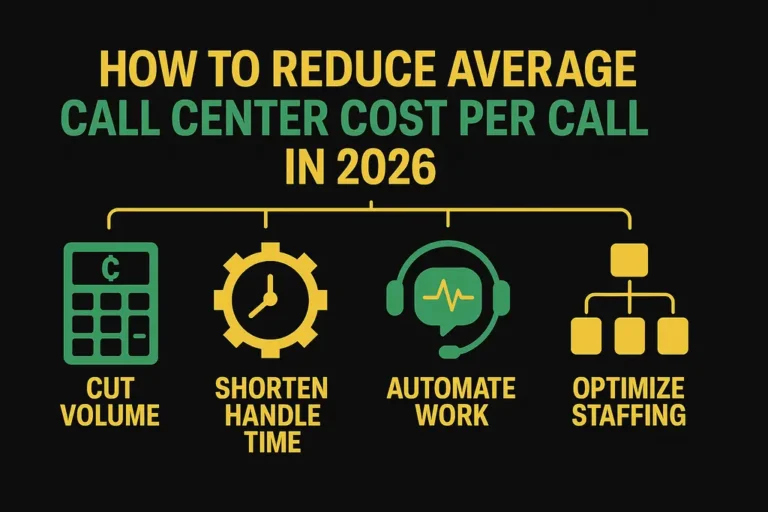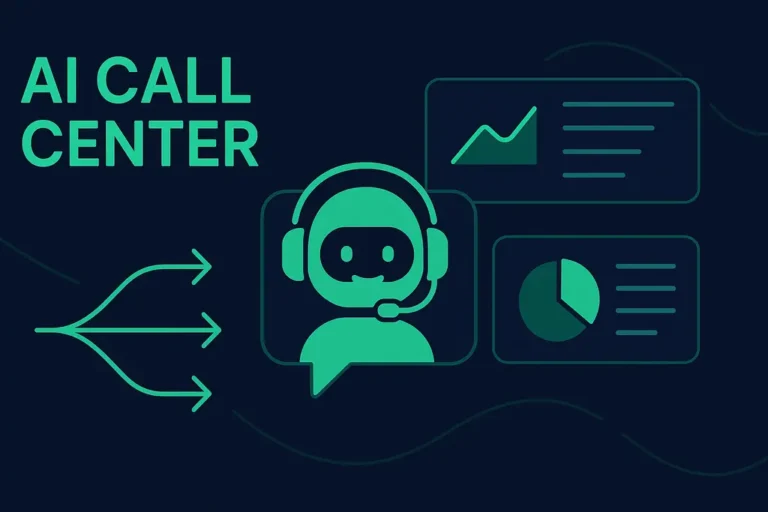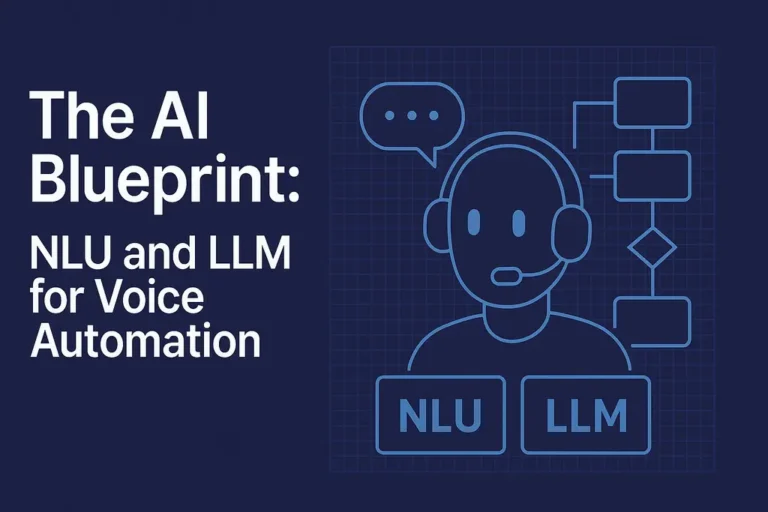Long wait times and dropped calls are more than just annoyances. They damage relationships and push customers away. In 2025, call overflow remains a persistent challenge for businesses worldwide. But instead of adding more staff, many businesses are leaning on AI. With advanced tools that can predict demand, manage after-hours calls, and route conversations intelligently, AI is becoming a key driver of customer satisfaction.
This blog examines how AI is enhancing the call overflow experience to make it smoother and more efficient.
What is Call Overflow?
Call overflow refers to a situation where the volume of incoming calls to a business or call center exceeds the capacity of its internal staff to handle them, leading to long wait times, missed calls, and frustrated customers. These extra calls are then sent to a backup plan. This backup could be a different team, a voicemail system, or a virtual queue.
Call overflow is a common problem. There are many factors behind it. For example, you may experience a sudden surge of calls during peak hours or immediately after a marketing campaign. Sometimes, a staff shortage causes it, or there could be a system failure. It can also occur when there is a sudden surge in demand for your services. Or a product problem can cause a flood of questions.
If you don’t handle it well, an overflow can cause problems for your business. Customers wait in long lines. This can make them frustrated. They might hang up, leading to missed business opportunities. It also places a significant amount of stress on your agents. If not managed properly, a call overflow can damage your brand. It can also make it harder to keep both customers and employees.
Why Call Overflow Matters More in 2025
Call overflow has always been a problem. However, by 2025, it will pose a major threat to your business. Let’s discuss why!
Customers Demand Faster Responses
Customer expectations for speed are very high. We live in a world of instant gratification. People now expect an answer almost right away. A few years ago, waiting five minutes was okay. However, a two-minute hold can now feel very long. There are many options available. Customers will not hesitate to hang up. They will take their business to a competitor.
Hybrid/Remote Call Centers and Higher Digital Call Volumes
The shift to hybrid and remote call centers has changed everything. Agents now work from anywhere, anytime. They handle calls, chats, and emails all at once. This makes the system more complex. This shift offers great flexibility. But it can also lead to unpredictable call volumes. A sudden rush of calls can overwhelm a team. This creates bottlenecks and long queues, which are hard to manage.
Competitive Pressure
The competitive pressure is intense. In 2025, customer loyalty is a fragile thing. A single bad experience with a long wait can harm your brand’s reputation. It can push customers away. Businesses that don’t manage call overflow well risk losing customers and money. In a market where everyone is competing for a share, a smooth and reliable customer experience is no longer a luxury but a competitive advantage.
How AI is Transforming Call Overflow Management
Earlier, managing call overflow was a manual process. It was a reactive process. Managers would rush to add more staff. Currently, AI has completely changed the way of managing the call center. It is no longer about reacting to overflow but about preventing it.
AI as the First Line of Defense in Customer Service
AI now serves as the first line of defense. A customer initially talks to an AI chatbot or virtual assistant before they reach a human agent. These AI tools can handle many routine tasks instantly. They can answer FAQs, check order status, and reset a password. AI systems solve these simple questions on their own. This stops a high volume of calls that would have otherwise overwhelmed your human team. This allows your agents to focus on complex issues that need a personal touch.
Predictive Analytics
AI can predict the future via predictive analytics. AI can look at past data from your call center. It can analyze daily call volumes and seasonal trends. It can even track how a marketing campaign affects call volumes. AI then uses this information to guess future spikes in demand. For example, the system might predict a big increase in calls on Black Friday or after the launch of a new product. This gives managers a heads-up. They can schedule more agents ahead of time to avoid long wait times altogether.
Machine Learning
AI is not a static tool. It gets smarter over time using machine learning. The system continuously learns from every call, chat, and email. It can analyze call transcripts. This helps it find new patterns in customer requests. It learns which calls are best for a certain agent. This constant learning makes the system more efficient. It leads to smarter call routing and more accurate responses. It leads to a continuously better ability to manage unexpected call volumes.
Intelligent Call Routing
Intelligent call routing serves as the GPS for your call center. This AI system finds the perfect agent for the specific needs of customers and then routes the call to that particular agent.
The system uses AI to analyze a customer’s information. It finds out their reason for calling via past interactions. Based on the analysis, it can match customers with the right agent. For example, it can match them to someone who has worked with them before. Alternatively, it can match with an agent who specializes in a specific product.
This smart routing has a huge impact. It helps solve a customer’s issue on the first call. This leads directly to higher customer satisfaction. It also builds loyalty.
Reducing Wait Times and Call Abandonment with AI
In the past, those long waits led to frustrated customers hanging up—a “call abandonment” that could mean lost business. However, today, AI is addressing this issue by making wait times more efficient and user-friendly.
First, AI is changing how we manage queues. It uses smart queue management. It is not a traditional “first-come, first-served” line. It can find out who is calling and what their needs are, and AI then prioritizes urgent calls or high-value customers. It also gives customers the option for an intelligent callback. The AI system estimates their wait time and then offers to call them back when an agent is free. This eliminates the need for them to wait on hold and greatly reduces frustration and call abandonment.
AI for After-Hours Call Management
Business doesn’t stop at 5 p.m. But your agents do. This leads to missed opportunities and frustrated customers. Customers had to wait until the next day for an answer.
AI-powered virtual receptionists and chatbots can handle many different questions outside of normal office hours. A customer who calls at 10 p.m. can still get instant answers about your services or products. This provides support 24/7/365 without the high cost of hiring a full overnight team.
If a customer has a more complex issue, the AI knows when to hand it off. It will automatically log a new support ticket for next-day follow-up. It can also capture all the important details from the conversation, such as the customer’s name and their issue. It adds all of this information directly to the ticket. This makes sure your agents wake up with a perfectly organized list of tasks.
Using AI for after-hours calls ensures you never miss a lead or an urgent issue. Every call is captured, documented, and handled in a proper manner. This gives your business a huge advantage of consistent service. You can solve problems for customers even when your team is unavailable.
Tools & Technologies Powering AI Call Overflow in 2025
Businesses cannot manage call overflow using a single tool. For this purpose, they require an entire ecosystem of advanced technologies built on powerful software and smart integrations. Let’s discuss which tools help businesses manage overflow.
Leading AI-powered platforms
Leading AI platforms, such as Salesforce Service Cloud Voice, Talkdesk, Five9, and Genesys, are all-in-one solutions that combine a flexible phone system with advanced AI features. Salesforce, for example, connects its powerful CRM with call functionality. This means every customer call, chat, and email is linked to their full history. This gives agents a complete view and aids AI in making smarter decisions about routing and support.
Cloud Telephony + CRM integration
The whole system of advanced call centers runs on cloud telephony. This technology replaces old, on-site hardware with a flexible, internet-based phone system instead. CRM integration brings everything together. When a customer calls, their information appears instantly on the agent’s screen. The AI can then use that data. It gives better, more personal service.
Role of NLP, Voice Recognition, and Sentiment Analysis
There are several technologies that make call centers highly efficient and effective. These technologies include voice recognition, NLP, and sentiment analysis. Voice recognition turns a customer’s spoken words into text. Natural Language Processing (NLP) then understands the meaning behind those words. It can figure out why the customer is calling and figure out what they need.
Finally, sentiment analysis analyzes the tone of their voice to find out their mood. This lets the system prioritize a call from an angry customer. Alternatively, it can direct them to an agent who is skilled at calming people down. These tools work together to create a call center that is both smart and efficient.
FAQs about How AI Manages Call Overflow
1. What does call overflow mean in a call center?
Call overflow happens when your call center gets more calls than your agents can handle. These extra calls are sent to a backup plan. This could be a virtual queue, voicemail system, or another team. It is a common problem that leads to long wait times and customer frustration.
2. How does AI reduce wait times in call overflow situations?
AI uses several methods to cut down on wait times. First, it uses predictive analytics. This helps it guess busy times. This way, managers can schedule enough agents to meet demand. Second, AI offers smart callback options. Finally, virtual assistants handle simple questions instantly. This keeps the queue shorter for everyone else.
3. Can AI completely replace human agents in overflow management?
No, AI cannot and should not completely replace human agents. Instead, AI and human agents work together. AI is a great first line of defense. It handles routine and repetitive tasks. This frees up human agents to focus on complex problems that need a personal touch. The best solution is a powerful blend of human expertise and AI efficiency.
4. What are the cost benefits of AI in call centers?
AI brings significant cost savings to a call center. It automates simple tasks. This reduces the need for manual work. It also frees up your agents’ time. This boosts productivity. By preventing lost customers and improving overall efficiency, AI becomes a powerful long-term investment.
5. Which AI tools are best for managing call overflow in 2025?
Leading AI platforms are the best tools for managing call overflow. These include Salesforce Service Cloud Voice, Genesys, Talkdesk, and Five9. These platforms are all-in-one solutions. They combine cloud telephony with powerful AI features. These features include sentiment analysis and intelligent call routing. Choosing the best tool depends on your specific business needs and existing systems.








